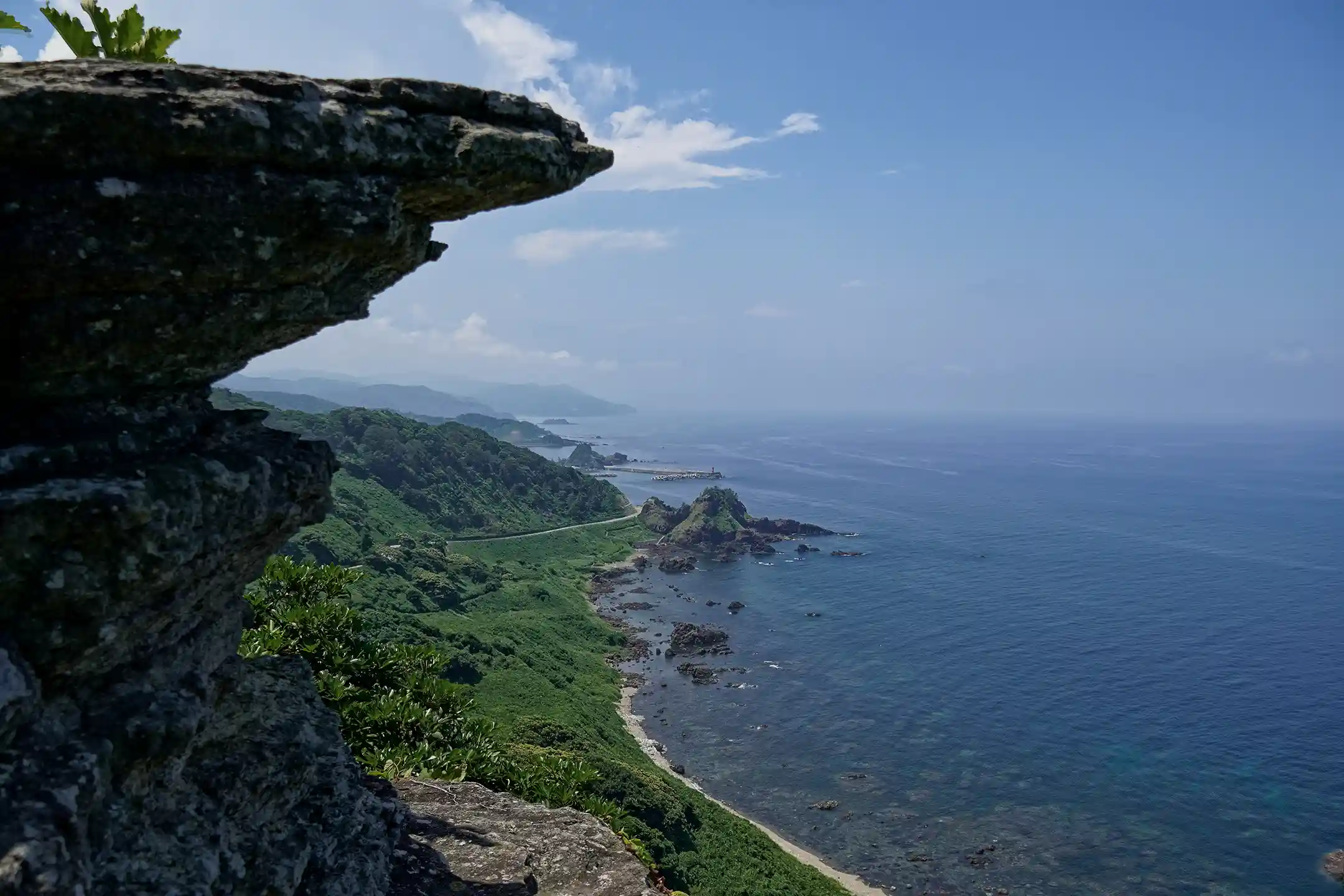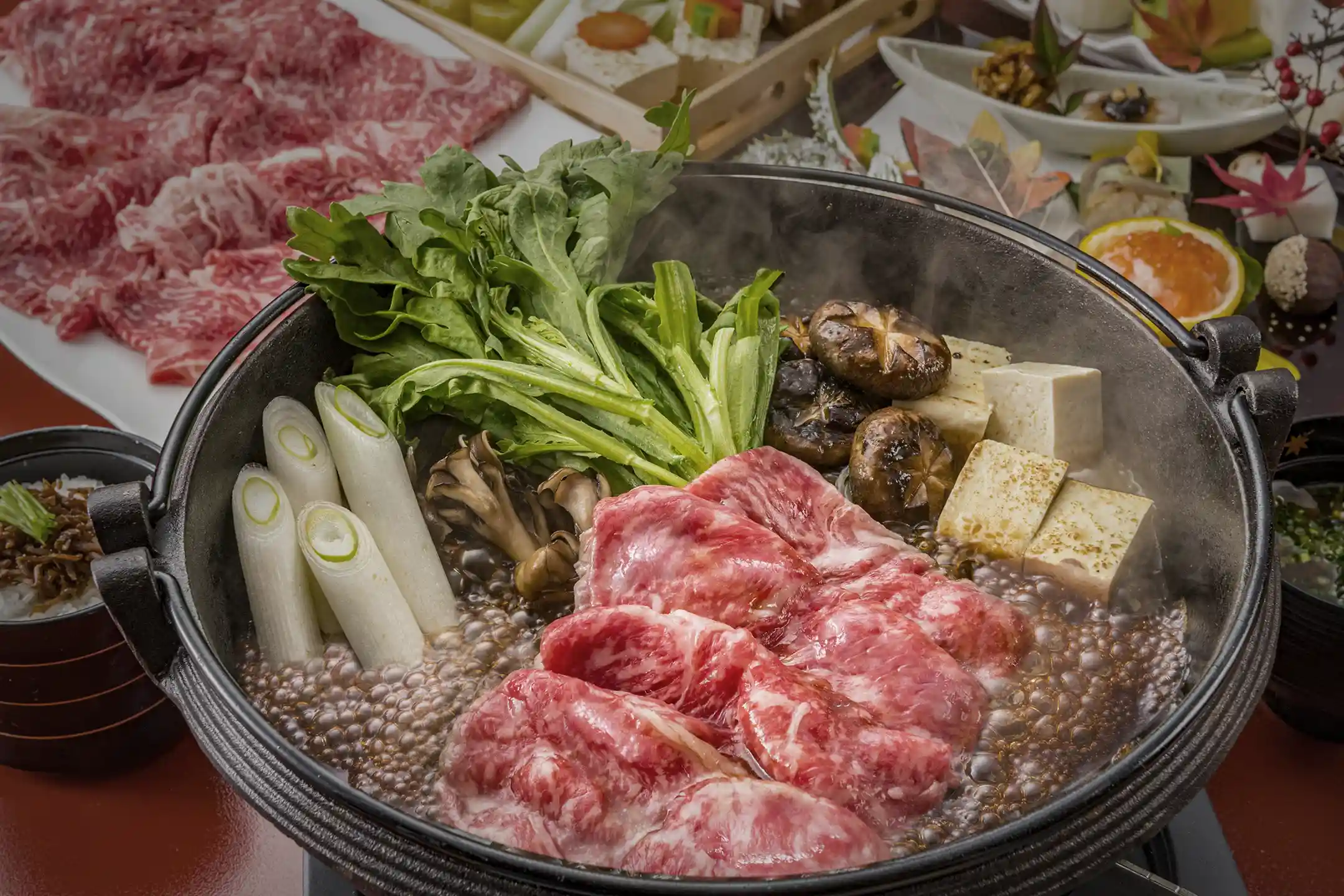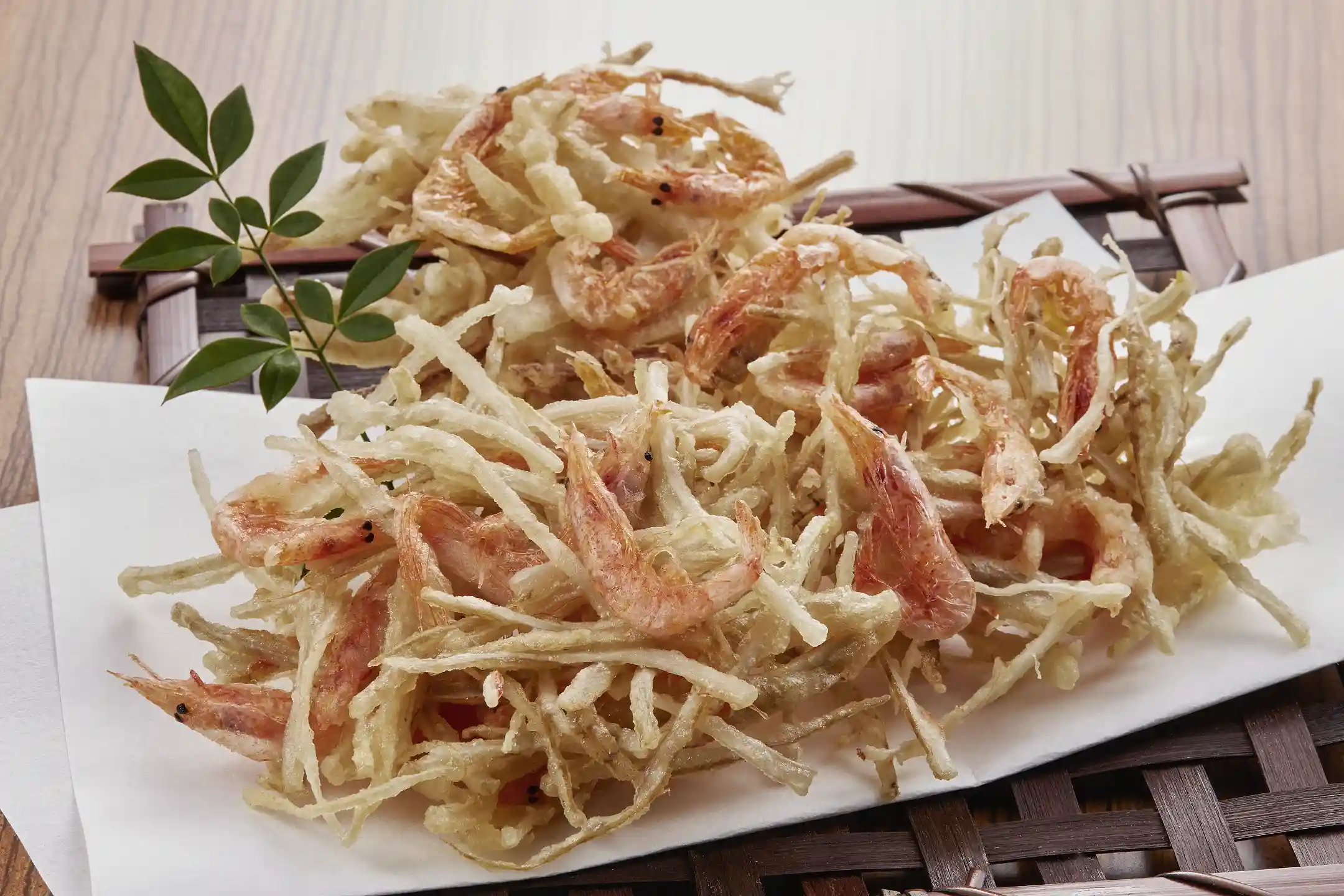Facing the Sea of Japan, the Noto Peninsula radiates a captivating blend of lush landscapes and a centuries-old cultural tapestry. As you explore, you’ll see how longstanding traditions seamlessly coexist with inventive modern art—evident in celebrated Wajima lacquerware (praised as one of Japan’s finest lacquer crafts) and the lively Kiriko Festivals that light up summer nights. While many Western countries tend to display crafts in museums or galleries, the Noto Peninsula offers a chance to see art as part of daily life, shaped by a perspective that doesn’t isolate “culture” as something distant. Recently, the Oku-Noto International Art Festival has further expanded opportunities to engage with art in the region, bringing more people into contact with these immersive local traditions.
In this article, you’ll learn why first-time visitors to the Noto Peninsula are often so delightfully surprised. You’ll discover everything from its deep history and cultural roots to exquisite cuisine and eco-oriented travel, as well as the distinct lifestyle experiences that make this region so memorable. Ready to explore a place where enduring customs and natural abundance harmonize with contemporary flair?
Recommended Attractions in the Noto Peninsula Where Traditional Culture and Contemporary Art Converge
.webp?width=750&height=500&name=toso-ki%20(sake%20set%20for%20New%20Year_s).webp)
Set along the dramatic Sea of Japan, the Noto Peninsula offers a cultural mosaic that pairs rich heritage—like Wajima lacquerware and Kiriko Festivals—with cutting-edge events such as the Oku-Noto International Art Festival. If you’re used to classifying items as “fine art” or “practical utensils,” you may be intrigued by the way these boundaries blur here. Hands-on activities, complete with English explanations, make these experiences accessible even if you don’t have specialized knowledge.
Touring and Hands-On Experiences at Wajima Lacquerware Workshops
Northern Noto is known for Wajima, famed for producing some of Japan’s most prized lacquerware. Each piece involves painstaking work—shaping the wood base, layering the lacquer, and adorning it with ornate designs—turning everyday dinnerware into art. If you’re from a culture that values utility above all, you might be surprised by how seamlessly aesthetics weave into daily life here.
During workshops, you’ll watch craftsmen in action and have the option to try applying lacquer yourself. Chatting with these artisans reveals the history and way of life underpinning each piece. Many studios offer guided sessions in English, so you’ll feel at ease as you learn about Wajima’s centuries-old skill and creativity.
Highlights of the Oku-Noto International Art Festival and Art Tourism Information
The Oku-Noto International Art Festival, held every three years, blends the Noto Peninsula’s scenic seascapes and cultural legacies with artistic creations by both Japanese and international talents. Installations often appear on beaches or in heritage buildings, giving you a fresh lens on local stories and landscapes. For many visitors, the sense of art intertwined with everyday life here can be wonderfully eye-opening, offering a perspective different from the typical museum visit.
Organized bus routes and guided tours help you navigate between venues, leaving you free to savor the art and meet local residents. Sampling regional specialties along the way adds another dimension to your trip, ensuring the festival is as much about human connection and culinary enjoyment as it is about the art itself.
Historical Architecture and the Beauty of Design—Noto Peninsula’s Must-See Attractions
The Noto Peninsula boasts architectural gems and gardens that showcase Japan’s subtle eye for detail and serene spaces. By stepping into ancient temples or former samurai homes, you’ll sense that each fixture and decorative element carries the legacy of refined craftsmanship and taste from bygone eras. If you’re more familiar with imposing Western cathedrals or medieval castles, the calm, measured use of space here may feel like a refreshing contrast.
In recent years, tours have embraced modern conveniences while carefully preserving these traditional buildings, often with the help of expert guides who bring the historical and spiritual backdrop to life.
Myojo-ji Temple—Showcasing the Architectural Beauty of One of Noto Peninsula’s Most Important Cultural Properties
With nearly 700 years of history, Myojo-ji Temple is a top spot to visit in the Noto region. Multiple buildings, from its main hall to the five-story pagoda, are designated Important Cultural Properties, each echoing the religious and social climate of its respective era. Japanese temple architecture typically features elaborate wood-joinery and gracefully curved roofs—intricate details best appreciated up close.

As Western visitors might find a certain awe in churches or cathedrals, Myojo-ji Temple provides insight into Japan’s spiritual dimension. Some tours require reservations, but many offer English explanations, helping you uncover the symbolic layers behind the temple’s architecture and Buddhist heritage.
Recommended Hotels and Inns That Utilize Historical Architecture in the Noto Peninsula
All around the Noto Peninsula, you’ll find lodging that has transformed traditional merchant or samurai houses into inns or boutique hotels, weaving classic wooden structures with contemporary comfort. Some rooms feature tatami floors and exposed beams—hallmarks of Japanese design—alongside sleek, modern touches that might remind you of an art gallery.
If you’re new to removing your shoes and strolling on tatami, you’ll likely find it an enjoyable shift from Western norms. Many of these properties supply English guides or have multilingual staff, so you can relax without worrying about language barriers. The buildings themselves often hold stories of the region’s past, giving you a culturally immersive journey through time.
Enjoying Refined Gourmet Tourism in the Noto Peninsula
Flanked by sea and mountains, the Noto Peninsula is an epicure’s dream, known for fresh seafood, fertile farmland, and conscientious agricultural practices. Its “Satoyama and Satoumi” initiative—where local farming and fishing methods thrive in balance with nature—has gained recognition as a Globally Important Agricultural Heritage System (GIAHS). Here, farm-to-table traditions mesh smoothly with modern culinary techniques.
Today, more restaurants highlight “Noto Cuisine,” elevating local flavors to create standout dishes that attract food enthusiasts from Japan and abroad. While Japanese food is sometimes seen as uniformly healthy, you’ll discover a captivating mix of time-honored methods and innovative flair that leaves a lasting impression.
Recommended Restaurants to Savor Noto Cuisine
A go-to choice in Wajima City is “Noto no Sho,” serving the day’s catch as sashimi or grilled fish. You’ll notice how they intertwine traditional seasonings like soy sauce and miso with newer cooking styles, producing a taste that’s comforting yet fresh. If you’re used to Western flavors, you might find these fermented ingredients add a distinctive twist. Plus, English-speaking staff can help explain the dishes in more detail.
Another highlight is “gamadan dining’s ‘Fermentation Lunch Meguru’” in Kanazawa, where a popular lunch course spotlights local produce grown by dedicated farmers. By blending high-quality salt and fermented condiments, each plate becomes both wholesome and flavorful.
Must-Visit Cafés in the Noto Peninsula
If you’d like a laid-back café break after your meal, head over to “Country Road” in Nanao City. Its warm wooden interior and large windows open onto a peaceful view, making it ideal for sipping meticulously brewed coffee or savoring a light meal. Set in a kominka (traditional house), this café delivers a gentle fusion of modern and rustic ambiance.

Meanwhile, “Gallery Café Umikaze” in Anamizu Town occupies a refurbished structure over a century old. You’ll find an inviting mix of classic Japanese charm and minimalist décor, plus fruit tarts showcasing in-season local produce. Rather like admiring artwork, you can appreciate these treats as a blend of local tradition and bountiful nature.
Eco-Friendly Travel—Sustainable Tourism in the Noto Peninsula
To keep the Noto Peninsula’s vibrant natural environment and cultural traditions alive for generations to come, local authorities and organizations are actively promoting ecotourism (). Demand for sustainable travel has been growing in Japan, just as it has in many Western countries, and community-led projects here are making steady headway.
Some tours invite you to farms or fishing villages where you can connect with locals and observe how they protect biodiversity and carry on heritage fishing methods. Instead of seeing these practices as simply “different,” you’ll build genuine connections that foster respect for community-based living and environmental stewardship.

Convenient Tesla Charging Spots and Routes for EV Travelers in the Noto Peninsula
Taking an electric vehicle (EV) on a scenic drive is becoming an increasingly popular way to explore responsibly. Around the Noto Peninsula, charging points keep growing in number—handy for Tesla drivers—and you’ll find them in places like Kanazawa and Nanao (), so you can venture along coastal routes without range anxiety.
Cruising between fishing villages, hot spring towns, or local produce markets in near-silence can evoke a road-trip mood while treading lightly on the environment. It’s a wonderful approach if you’re used to the spontaneity of Western road travel and want to enjoy Japan’s seasonal landscapes with a lighter footprint.
Eco-Resorts for Tourists—Environmentally Conscious Lodging in the Noto Peninsula
Scattered throughout the region are eco-resorts that balance respect for nature with local culture, incorporating aspects like locally sourced ingredients and clean energy (*3). Admiring sweeping ocean or mountain vistas from a quiet retreat can be a refreshing break from daily pressures, drawing you closer to the land.
Some properties even host hands-on workshops in traditional crafts or farming, letting you immerse yourself in local customs rather than just observing from the sidelines. Embracing Noto’s “satoyama” ethos while pampering yourself in a tranquil atmosphere offers a distinctive charm you might not find at many Western-style resorts.

In Closing
The Noto Peninsula sets itself apart by blending time-honored customs—like Wajima lacquerware and energetic Kiriko Festivals—with contemporary art showcased in events such as the Oku-Noto International Art Festival. Its historical landmarks, including Myojo-ji Temple and restored samurai homes turned lodgings, let you engage with both heritage and modern comforts. Meanwhile, the local flavors of “Noto Cuisine,” served in top-notch restaurants, and seasonal sweets in repurposed kominka cafés reveal how traditional ingredients flourish under contemporary creativity.
On top of that, the region’s ecotourism efforts protect the environment while the expansion of EV charging stations offers a greener approach to exploring. These varied opportunities come from a community that safeguards its traditions yet embraces fresh perspectives—one reason many first-time visitors exclaim, “I never imagined a place like this!” When choosing your next travel destination, consider the Noto Peninsula. Its harmonious mix of cultural heritage, natural bounty, and inspired innovation will leave you with a wealth of stories, tastes, and ideas to carry home.
Author Bio

Natsumi Ikeshita
Experienced in B2B SaaS marketing and “omotenashi,” Natsumi directs media operations with a focus on hospitality and cultural storytelling. Her global experience and marketing skills bring fresh value to Bespoke Discovery’s content.





/Kazunoko%20Matsumae-zuke%20(Herring%20Roe%20and%20Seafood%20Pickles).webp)